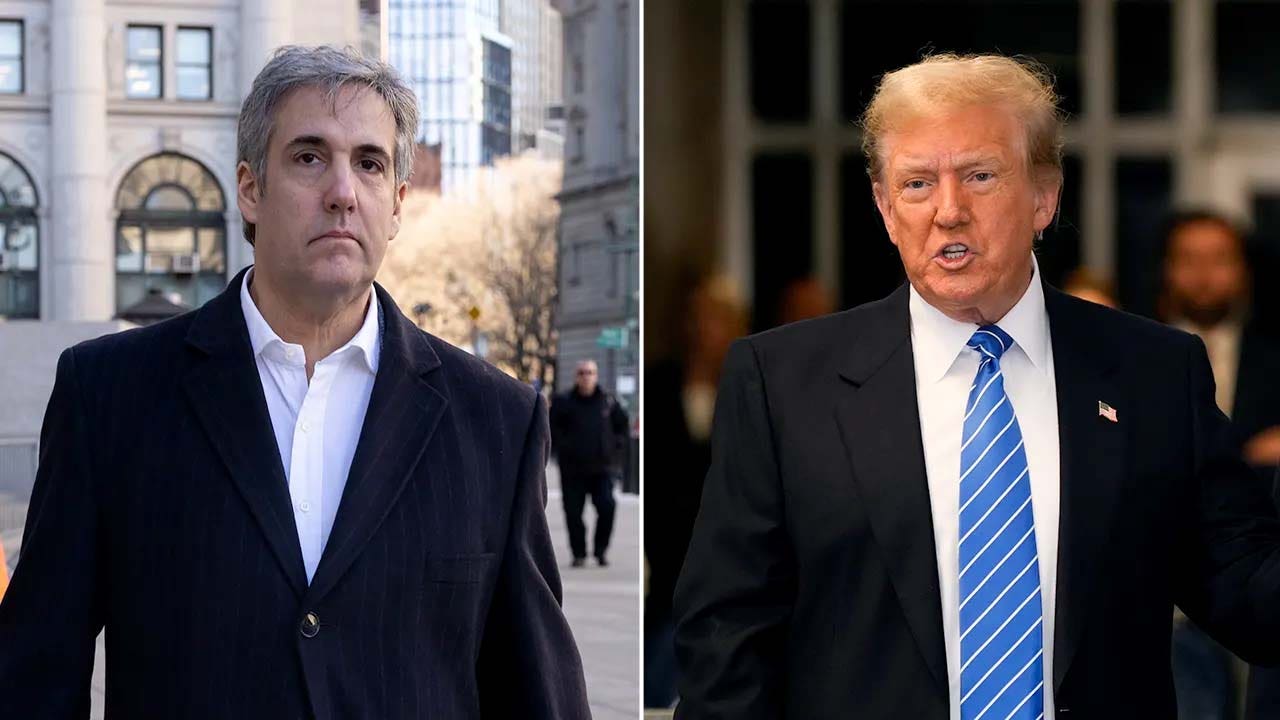There is no particular mystery to unravel around the political views of Elon Musk, the billionaire technology and social media executive. He is — and for some time, has been — on the far right wing of American politics. He is an enthusiastic purveyor of far-right conspiracy theories, using his platform on the website X to spread a worldview that is as extreme as it is untethered from reality.
Musk is especially preoccupied with the racial makeup of the country and the alleged deficiency of nonwhites in important positions. He blames the recent problems at Boeing, for example, on its efforts to diversify its work force, despite easily accessible and widely publicized accounts of a dangerous culture of cost-cutting and profit-seeking at the company.
“Experts and critics say that Boeing’s woes have been years in the making,” reported CNN in January, “some pointing to the result of a shift in corporate culture that started at the top and put profits ahead of the safety and engineering prowess for which it was once praised, placing not only its future, but the passengers on its planes, at grave risk.”
Is diversity the problem at Boeing, or is it a shortsighted obsession with maximizing shareholder value at the expense of quality and safety? Musk, a wealthy shareholder in various companies — including his own, Tesla, which is being sued by Equal Employment Opportunity Commission for allegedly allowing racist abuse of some of its Black employees — says it’s diversity.
“It will take an airplane crashing and killing hundreds of people for them to change this crazy policy of DIE,” Musk wrote in January, deliberately misspelling the acronym D.E.I., meaning diversity, equity and inclusion.
Musk’s current obsession, as Greg Sargent observes in The New Republic, is the “great replacement,” a far-right conspiracy theory that liberal elites in the United States are deliberately opening the southern border to nonwhite immigration from Mexico, South and Central America in order to replace the nation’s white majority and secure permanent control of its political institutions.
On X, Musk recently pinned a post to a slickly produced video that purports to expose a “Democrat open borders plan to entrench single-party rule,” in which Democrats shepherd millions of people into the United States and “keep them in the country at all costs.” Musk says, “This is actually happening!” The video had, at the time of this writing, well over 50 million views.
Musk is far from the first person to push the “great replacement” theory. It was featured in ads released by Representative Elise Stefanik of New York, a top Republican in the House. “Radical Democrats are planning their most aggressive move yet: a PERMANENT ELECTION INSURRECTION,” said one version of the advertisement. “Their plan to grant amnesty to 11 MILLION illegal immigrants will overthrow our current electorate and create a permanent liberal majority in Washington.”
The “great replacement” was part of the centerpiece of Tucker Carlson’s message to viewers during his time on Fox News. It is touted by a number of anti-immigrant, white nationalist and white supremacist groups. It was featured prominently at the Unite the Right rally in Charlottesville, Va., in 2017, where neo-Nazis chanted “Jews will not replace us.” And it has inspired at least four separate mass shootings, including the 2018 Tree of Life synagogue shooting in Pittsburgh (11 killed), the 2019 Christchurch shootings in New Zealand (51 killed), the El Paso shooting the same year (23 killed) and the 2022 supermarket shooting in Buffalo (10 killed).
It should go without saying that the “great replacement” is idiotic. There is no “open border.” There is no effort to “replace” the white population of the United States. Racial diversity is not a plot against the nation’s political institutions. And the underlying assumption of the “great replacement” — that, until recently, the United States was a racially and culturally homogenous nation — is nonsense.
But beyond this obvious critique lies a more subtle problem with the “great replacement” conceit. It rests as much on a racial understanding of political identity as it does a racial understanding of national identity.
As Musk and his like-minded paranoiacs see it, nonwhite voters would necessarily be Democrats. With each new “illegal,” the Democratic Party gets a new vote. But there’s nothing about immigration status or melanin content that demands liberal politics. And in fact, there’s growing evidence of a rightward drift among nonwhite voters, particularly those of Hispanic origin. If nonwhite voters are up for grabs — if their partisan identities are more contingent than fixed — then it’s also true that Republicans and conservatives can simply compete for their allegiance the way they would for members of any other group.
There lies the rub. To compete for voters is to believe in one of the fundamental truths of democracy: that there’s no such thing as a permanent majority. Just the opposite, in fact. Majorities in a democratic country are variable and fluid for the simple reason that individuals themselves are variable and fluid. They contradict themselves. They contain multitudes. They have different and competing values and interests that fall in and out of salience depending on the situation or political context. Your opponent may have assembled a majority to beat you, but you can — in the next election — assemble a different majority to win for yourself. The only constant is that nothing is settled or set in place.
To believe that the “great replacement” is true is to reject the dynamism of democratic society. It is to believe, instead, in a zero-sum world of immutable identities and the hierarchies that necessarily follow. There is no hope for persuasion — no hope for politics, even — if people can be only one thing.
It’s no surprise, then, that the rise of “great replacement” theory has happened in tandem with the Republican Party’s turn toward authoritarianism in the personage of Donald Trump. If there’s no persuasion, then the only thing that’s left is domination and the imperative, then, to dominate others before they can dominate you.
What I Wrote
My Tuesday column was my regular, election-year reminder that a candidate’s statements in a presidential campaign are a reliable guide to a president’s actions in office.
One of the most enduring bits of folk wisdom about American politics is the notion that a promise made on the campaign trail is almost never a promise kept. The only thing you can count on from a politician, and especially a presidential candidate, is that you can’t count on anything. This isn’t actually true. There is, in fact, a strong connection between what a candidate says on the campaign trail and what a president does in office.
My Friday column was on the Supreme Court’s legitimacy crisis.
There is no question that the Supreme Court’s ruling in Dobbs was the catalyst for its poor standing with the public. But the Dobbs majority owes itself to a garish Republican partisanship that almost certainly worked to weaken the political ground on which it stood in relation to the American people.
Now Reading
Eliza Griswold on the child casualties of the Gaza war, in The New Yorker.
Eric Foner on how Black Americans navigated the American legal system in the years before the Civil Rights Movement, in The New York Review of Books.
Marisa Kabas on Jonathan Glazer in her newsletter.
Don Moynihan on Christopher Rufo and the organized attack on Black scholars and scholarship in his newsletter.
A scene from Charlottesville. This was taken on the corner of Market Street and Fourth Street NE, a portion of which was renamed “Heather Heyer Way” in memory of the young woman who was killed by a white supremacist protester on Aug.12, 2017.
Now Eating: Pasta with Tomatoes and Beans
We do at least one meal of pasta and beans every week and this week we used this recipe from Martha Rose Shulman of The New York Times’ Cooking Section. The only real change I made was to add a few mashed anchovy filets to the garlic and onions at the start, but that’s not necessary. The recipe calls for a 14-ounce can of chopped tomatoes, but I would recommend using a can of whole tomatoes that you crush yourself. Otherwise, make as is!
Ingredients
-
2 tablespoons extra virgin olive oil
-
1 small onion, finely chopped
-
2 garlic cloves, minced
-
1 14-ounce can chopped tomatoes, with juice
-
Pinch of sugar
-
Salt
-
freshly ground pepper
-
1 15-ounce can cannellini beans, drained and rinsed
-
4 sage leaves or basil leaves, cut in slivers
-
¾ pound pasta, any shape
-
¼ cup freshly grated Parmesan
Directions
Bring a large pot of water to a boil.
Meanwhile, heat the olive oil over medium heat in a large skillet or saucepan. Add the onion. Cook, stirring, until tender, about five minutes. Add the garlic, and stir together until fragrant, about 30 seconds. Add the tomatoes with juice and a pinch of sugar. Raise the heat slightly, and cook, stirring, until the tomatoes are bubbling vigorously. Lower the heat to medium-low, and cook gently, stirring and mashing the tomatoes often with the back of your spoon until they have cooked down into a thick, fragrant sauce, 15 to 20 minutes. Stir in the beans and the herbs, and season to taste with salt and pepper. Keep warm.
When the pasta water comes to a boil, salt generously and add the pasta. Cook al dente, following the recommendations on the package but checking about a minute before the indicated time. When the pasta is just about done, check to see if the tomato sauce seems dry. If so, add up to ¼ cup of the pasta water to the pan and stir. Drain the pasta, toss with the sauce and serve, passing the cheese for sprinkling.






